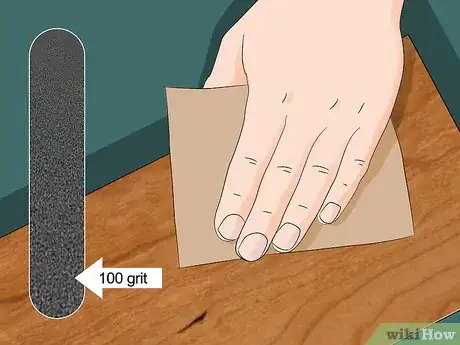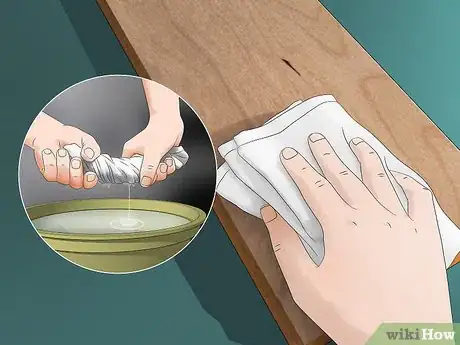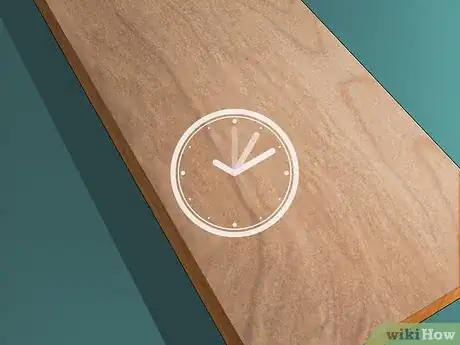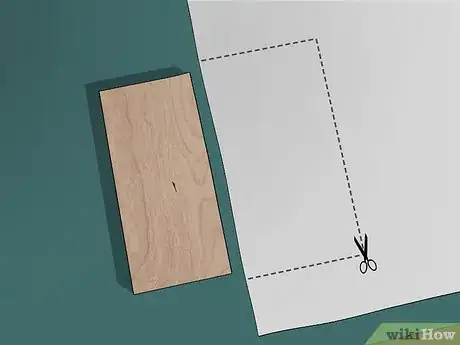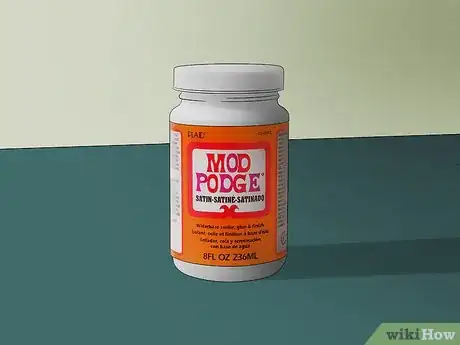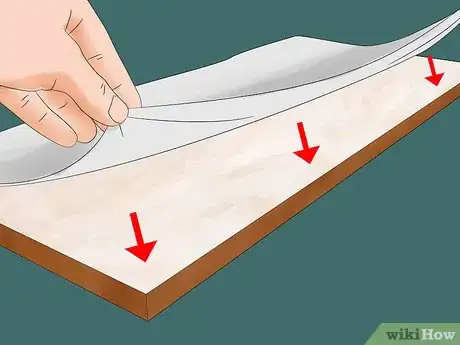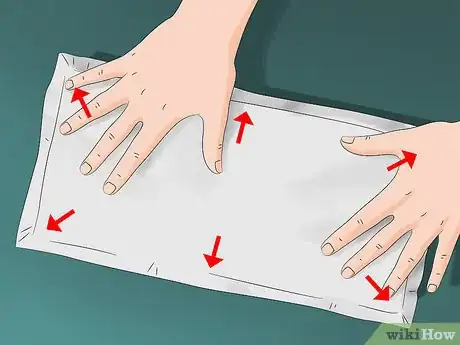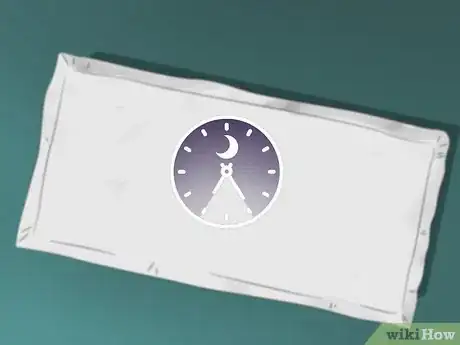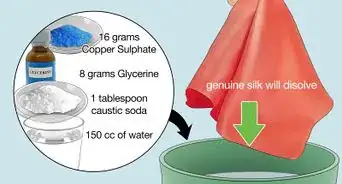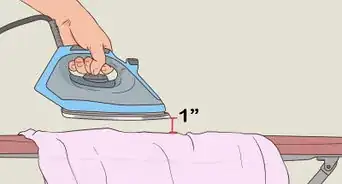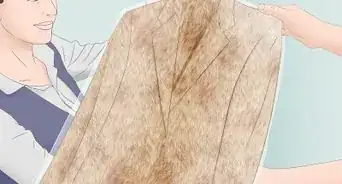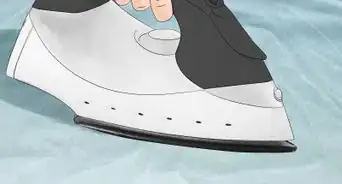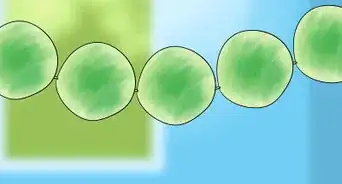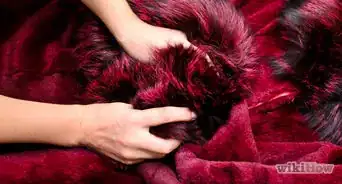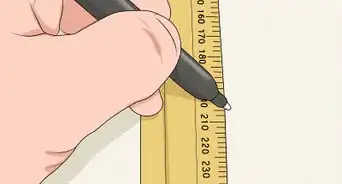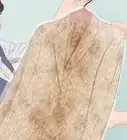This article was co-authored by Nicole Bolin. Nicole Bolin is a Crafting Specialist and the CEO of Stencil, a DIY Craft Studio in Phoenix, Arizona. Nicole specializes in interior design and various craft and DIY projects. Nicole holds a Certificate in Interior Design from the New York Institute of Art and Design. She opened Stencil in 2017 to teach others to create DIY projects that fit their home and lifestyle.
There are 9 references cited in this article, which can be found at the bottom of the page.
This article has been viewed 137,282 times.
If you want to adhere fabric to a piece of wood without it peeling off, you'll have to use something that's stronger than a basic crafting glue. To glue a piece of fabric to wood, you'll need to sand the surface of the wood and then use mod podge to attach the fabric. Other glues have the tendency to show through the fabric or aren't strong enough adhesives and should be avoided. If you use the proper techniques and materials, your fabric will stay attached to the wood for the long run.
Steps
Preparing the Wood
-
1Sand the wood with 100-200 grit sandpaper. Before you start to apply the fabric to the wood surface, you should make sure it's smooth. Get a 100-200 grit sandpaper and sand back and forth over the area that you want to adhere the fabric to. Creating a smooth surface will eliminate bumps.[1]
-
2Wipe down the surface of the wood with a damp rag. Remove any dust that was created from sanding your piece of wood by wiping down its surface with a damp rag. Don't use an overly saturated rag because you don't want to get your wood wet.[2]Advertisement
-
3Let the wood dry fully before applying adhesive. The mod podge won't work as well if you try to apply it to a damp or wet surface. Make sure the wood is dried out before moving on.
-
4Measure and cut your fabric to size. Lay your fabric over the piece of wood, leaving at least 1 inch (2.5 cm) of slack around the fabric. This excess will ensure that you get complete coverage of fabric over the wood.[3]
Gluing with Mod Podge
-
1Purchase or make mod podge. You can buy mod podge at an arts and crafts store or you can purchase it online. This versatile crafting glue is an adhesive, sealer, and finisher and can be used on a variety of different materials, including fabric and wood.[4]
- There are a variety of different mod podge options you can purchase. Matte, glossy, fabric, or wood mod podge will all effectively adhere your fabric to wood.[5]
-
2Apply the mod podge to the wood in an even layer. Use a painter's brush or a foam brush and dip it into your mod podge container. Work around the edges of where you'll be laying your fabric, then work your way towards the center of your wooden piece. Work fast because mod podge dries quickly.[6]
-
3Lay the fabric over the mod podge. Line up the fabric as accurately as you can as you lay it over the mod podge. Lay the fabric down and press the fabric onto the wood.[7]
-
4Smooth out any wrinkles with your hands. Use the palm of your hand and rub over the surface of the fabric to smooth out the wrinkles. Apply a small amount of pressure over the top of the fabric so that it attaches to the mod podge.[8]
- You can also use a brayer, or a handheld roller, to roll over the fabric and get rid of the wrinkles.
-
5Let the mod podge dry for 24 hours. Mod podge will dry fairly quickly, but leaving it to dry overnight will ensure it's completely dry. Return to your wood and lightly tug on the edges of the fabric to make sure that it's fully adhered.[9]
-
6Cut off the excess fabric. Use a scissor to carefully cut off the 1 inch (2.5 cm) of excess fabric. Your fabric should now be neatly attached to the wood.[10]
Community Q&A
-
QuestionCan I adhere fabric to particle board with the same effect?
 T. ChinsenTop AnswererA spray adhesive is the fastest way to attach fabric to particle board; it prevents the seepage of glue or modge podge bleeding into the fabric. This will also have a shorter drying time. Hot glue is an option if you are able to apply a thin, even coating.
T. ChinsenTop AnswererA spray adhesive is the fastest way to attach fabric to particle board; it prevents the seepage of glue or modge podge bleeding into the fabric. This will also have a shorter drying time. Hot glue is an option if you are able to apply a thin, even coating. -
QuestionDo I put another layer of Mod Podge on top of the fabric after it dries to seal it all?
 MidmorrowCommunity AnswerNo. One coat should do. If you would like to add another layer, feel free, but note that it may make it look clumpy if applied unevenly.
MidmorrowCommunity AnswerNo. One coat should do. If you would like to add another layer, feel free, but note that it may make it look clumpy if applied unevenly. -
QuestionWhat kind of fabric should I use?
 MidmorrowCommunity AnswerYou could use a cheap fabric like cotton or calico. If you would like a more durable surface, faux leather would work.
MidmorrowCommunity AnswerYou could use a cheap fabric like cotton or calico. If you would like a more durable surface, faux leather would work.
Things You'll Need
- 100-200 grit sandpaper
- Rag
- Water
- Mod Podge
- Fabric
- Wood
- Painter's brush or foam brush
- Scissors
References
- ↑ http://modpodgerocksblog.com/the-7-steps-to-perfect-mod-podging-every-time
- ↑ https://www.wayfair.com/ideas-and-advice/how-to-sand-and-stain-a-table-S5280.html
- ↑ http://www.allthingsthrifty.com/2014/09/a-thrifty-upholstered-chair.html
- ↑ https://artfulparent.com/homemade-mod-podge-vs-the-real-deal-autumn-leaves/
- ↑ https://plaidonline.com/plaid/media/plaidlibrary/eduPDF/mod-podge-ebook.pdf
- ↑ https://www.youtube.com/watch?v=2qRAGxcOmhI&feature=youtu.be&t=45s
- ↑ https://www.youtube.com/watch?v=SnZ0h-lP9w4&feature=youtu.be&t=2m45s
- ↑ https://www.youtube.com/watch?v=dYJ-Wyv8ALc&feature=youtu.be
- ↑ http://modpodgerocksblog.com/learn-how-to-mod-podge
About This Article
To adhere fabric to wood, you’ll need to sand the surface of the wood, then use Mod Podge to bind the fabric to it. First, sand the wood with 100-200 grit sandpaper to make it smooth for better adhesion. Then, wipe the surface of the wood down with a damp rag and allow it to fully dry. Use a painter’s brush or a foam brush to apply Mod Podge to the wood in an even layer. Line up the fabric with the edges of the wood and lay it over the surface. Work quickly to smooth out any wrinkles in the fabric with your hands. Let the Mod Podge dry for a full 24 hours, then trim off the excess fabric with a pair of scissors. For tips about how to measure and cut your fabric to size, keep reading!
